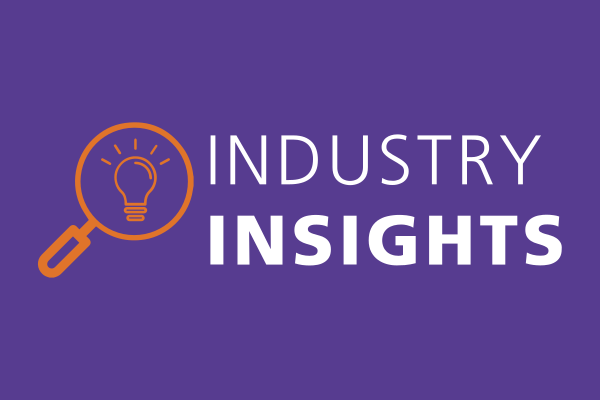Major gift fundraising is the backbone of nonprofit funding. A study from Indiana University Lilly Family School of Philanthropy shows that large organizations (those with budgets over $10 million), receive 95% of individual donations from the top 20% of donors. Meanwhile, small charities (with budgets less than $200,000), received 84% of contributions from the top 20% of donors. These numbers highlight the fundraising power of major gifts no matter the size of your organization.
Major gifts also can reduce your nonprofit’s reliance on government grants. Organizations that prioritize major donors, individual giving, and foundation grants over government funding report significantly less concern about policy changes affecting their revenue streams.
The value of a major giving program is clear, but this fundraising segment requires intentional, data-driven strategies to identify the right donors, build relationships, and secure donations. The following 18 tips, organized by fundraising stage, will guide you through developing an effective major gifts program.
18 Major Donor Fundraising Tips by Stage
Prospect Identification and Research
This stage gives you the direction you need for your outreach. Instead of making assumptions about donors, prospect research and analytics help you identify potential major donors who have both the capacity and desire to give to your cause.
1. Start with your current donor base
The simplest way to find potential major donors is to examine your existing donor base. These donors have already bought into your mission and are familiar with your cause. They may not yet give at major donor levels, but perhaps they have the potential to do so. Using wealth screening and predictive modeling can help you narrow down your potential major donor list.
2. Look beyond wealth screening
Wealth screening is an excellent first step to understanding a donor’s potential, but it’s not the full picture. Imagine a donor gave $500 to an animal rescue organization because a friend asked her to support the cause. While the donor is happy to support the friend, her true interest lies in sustainability and creating a greener world. If the animal organization only evaluated her on the capacity to give, then they’d be wasting time and resources trying to nurture a relationship.
This is why other factors like giving history, affinity to give, and demographics all play a part in prospect research. AI-powered predictive modeling can help you weigh these factors and find the most likely donors for your major giving program.
3. Identify your internal champions
When you think of the biggest supporters of your organization (your super fans, if you will), who comes to mind? Is it your biggest donors? In actuality, the strongest advocates of your organization are your employees and volunteers, in particular your board. They are the ones who understand the organization like the back of their hand. They are your ride-or-dies, so if you’re not leveraging their networks to your full advantage, it’s time to start. When prospecting new major donors, start with the people with whom your board, executives, or directors have relationships. They can make the introduction and set you up for success.
Cultivation and Relationship Building
Now that you’ve identified your top major gift candidates, it’s time to nurture those relationships. This phase requires patience, personalization, and a commitment to understanding your donor’s motivations and interests.
4. Personalize, personalize, personalize
You are building a one-on-one relationship with each major donor, so learn about them. Discover their preferred communication methods, the names of their family members, their work, and what they like to do in their free time. Share impact reports and stories of beneficiaries that align with their interests.
5. Don’t rush the ask
This stage is all about getting to know the donor, so don’t jump the gun by asking for a donation too early. If a good portion of your communications are more about the donor’s interests than the potential to give to the organization, that’s okay. You have to build a foundational relationship first.
6. Engage the whole family
Major giving is often a family decision. Ask the prospective donor about involving their spouse, children, or other key family members in events and volunteer activities. This can build a deeper, more lasting connection to your organization.
Solicitation and the Ask
The solicitation stage is where all of your preparation meets opportunity. Success depends on the right timing, clear communication of impact, and addressing donor concerns with confidence.
7. Dial in the ask amount and the message
One of the most nerve-wracking aspects of the ask is how much to ask for. If you ask for too much, you could put off the donor. If you ask for too little, you miss out on an opportunity for a greater donation. This is why more and more fundraisers are turning to predictive ask amounts. By letting AI-powered tools calculate an appropriate ask amount using data such as wealth screening and giving history, you take the pressure off of the fundraiser.
8. Demonstrate impact with specificity
When you ask someone for a large sum of money, they (understandably) want to know how it will be used. Be prepared with program specifics and data to show how their donation would make an impact on not only the organization, but also on the cause more broadly.
9. Understand the tax-side of donations
We’re not saying that you should be a tax expert, but it’s helpful to have an understanding of the tax benefits of donating. When charitable deductions are higher, charitable giving rises accordingly. Charitable giving is one of the primary ways that higher-income taxpayers reduce their tax liabilities, so encourage donors to consult with a tax professional. Also, have a few tax-related resources ready to share in case they’d like to learn more.
10. Be prepared to accept non-cash gifts
Some major donors look for alternative donation options to make their philanthropic dollars and their tax benefits go further. This could include gifts-in-kind, legacy gifts, stock donations or Donor Advised Funds (DAF) gifts. These non-cash donations are also beneficial to the organization, helping to diversify assets and provide long-term growth opportunities for the organization. For reference, at the midpoint of 2024, stock gifts on the DonateStock platform (representing thousands of organizations) were up 65% while proceeds from stock gifting were up 285% vs. 2023.
11. Prepare for objections and concerns
A successful ask involves more than just a perfect pitch. Be ready to address common questions and concerns from donors about timing, gift structure, or impact. Having thoughtful, well-prepared answers shows you respect their concerns and have done your homework.
Stewardship and Retention
You received a major donation—that’s amazing! Before you move on to the next donor, consider your stewardship strategy. Major gift fundraising is all about building a relationship and that relationship continues post-donation, when one-time donors become lifelong partners.
12. Go beyond a thank you
Learn how your donor would like to be recognized. Would they prefer recognition at a public event? Do they prefer to stay out of the limelight? Once you’ve recognized the donor and shared your gratitude, keep in touch with them. Share updates to the programs and check in on them and their family. The bottom line is to keep them top of mind.
13. Don’t leave major donors out of future campaigns
Just because major donors donated a significant sum, doesn’t mean you should exclude them from additional campaigns. Major donors want to be involved. They want to see what’s going on with your organization. They may not make a donation, but it’s important to keep them in the loop. Plus, if there’s a campaign that resonates deeply with them, they may make a one-off donation.
14. Provide updates on programs and show ROI
When major donors give to your organization, they’re investing in your organization to influence the cause that matters to them. Just like an investment in another business, they want to understand how their dollars are being put to use. However, instead of getting a personal return on their dollars, they want to see how their dollars influence the organization’s mission and cause. With the investment analogy in mind, regularly update major donors with program updates, impact reports, and data on the impact of their donation. And, of course, comply with the legal requirement to publish your annual report and share the link with major donors and major gift prospects.
15. Create a legacy giving program
Many major donors are also interested in leaving a lasting legacy. Develop and promote a planned giving program that allows them to include your organization in their will or estate plan, ensuring your mission continues for generations.
Bonus: Data Management and Tracking
While data management isn’t technically a fundraising stage, data is your best friend when it comes to building a major gift program. It will help you track major donors, understand preferences, and provide predictive insights, so use these tips to better understand your major donor base.
16. Leverage your CRM
Your customer relationship management (CRM) software, such as Blackbaud Raiser’s Edge NXT®, is the foundation for building lasting, influential donor relationships and unlocking transformative major giving opportunities with clarity and purpose. Create rich, multidimensional donor profiles that reflect more than just contact information. Capture their philanthropic journey including past gifts, event involvement, volunteerism, communication preferences, and personal passions. Inspire thoughtful, personalized engagement that deepens connections and empowers your mission.
17. Prioritize data hygiene
Your CRM is only as good as the data you provide it. Standardize data entry like names, addresses, and phone numbers for consistency across the board. Regularly delete duplicate contacts or fields to keep your database clean, and log every phone call, email, meeting, and event attendance.
18. Analyze and optimize your program
Fundraising is an iterative process, so regularly review performance data to get deeper insights into your major gift program. Ask questions like:
- Which portfolios are underperforming?
- What is the total untapped giving potential in your database?
- What do our successful major gift fundraising tactics and/or donors have in common?
→ Access data extras: 4 Tips to Cultivate Major Gift Prospects with Data Analysis
How Blackbaud Streamlines Your Major Gift Journey
Blackbaud provides a suite of integrated products designed to streamline the entire major gift fundraising journey, from initial prospect identification to ongoing stewardship. With one, unified system, Blackbaud helps organizations overcome common challenges like data silos and manual processes. Here’s how it works:
- AI-powered tools like Raiser’s Edge NXT help you identify high-potential donors by combining a prospect’s financial capacity with their likelihood to give to your specific cause.
- Once identified, the Raiser’s Edge NXT Work Center simplifies the entire moves management process, allowing you to track all donor interactions, set goals, and manage your portfolio.
- Finally, powerful analytics and reporting tools give you the ability to monitor key performance indicators, visualize your pipeline, and make data-driven decisions that will help your team secure more major gifts.
Want to learn more? Discover why organizations of every size choose Raiser’s Edge NXT for their major giving programs.
The post Major Donor Fundraising: 18 Tips for Securing Large Gifts first appeared on The ENGAGE Blog by Blackbaud.

